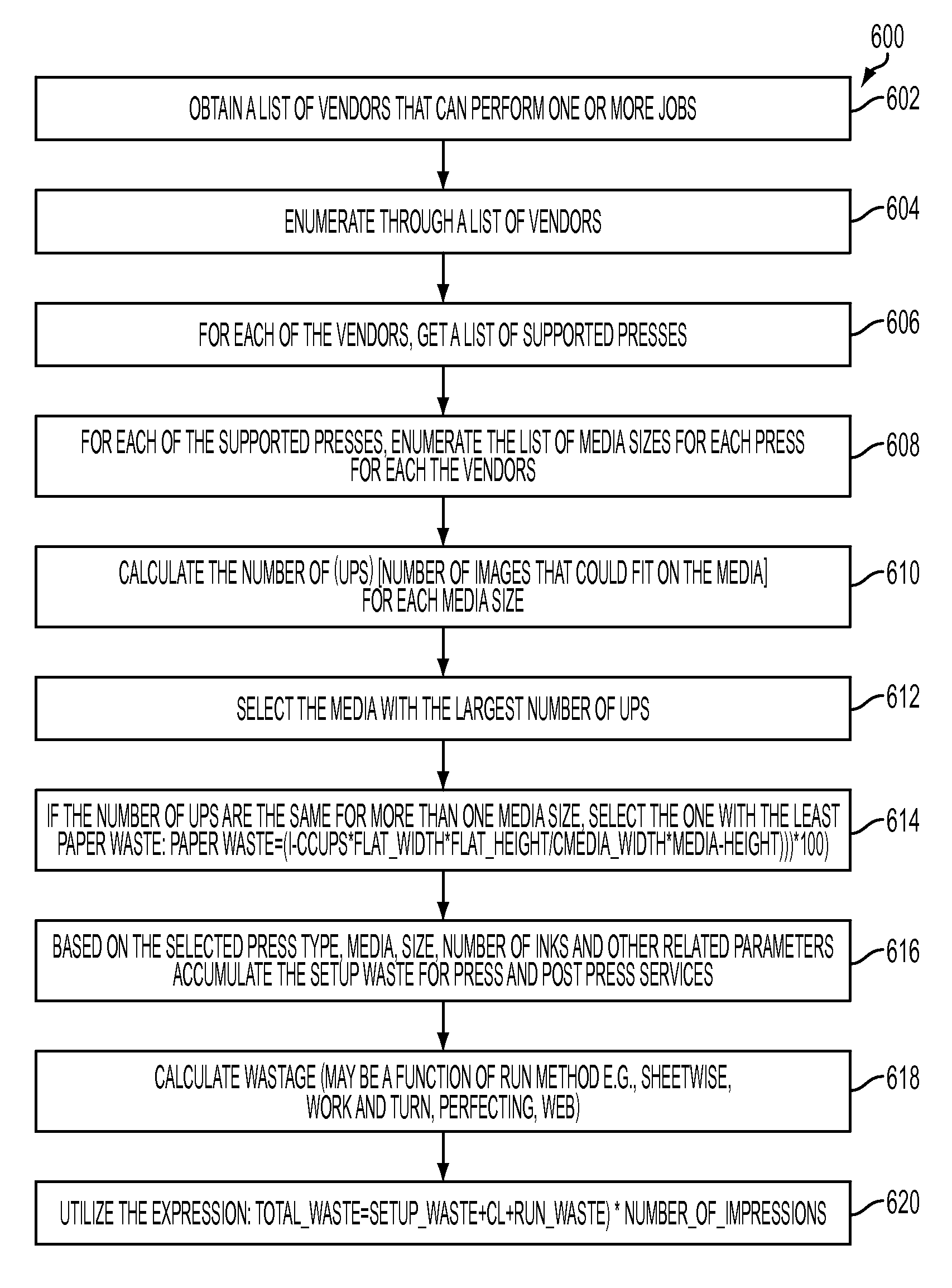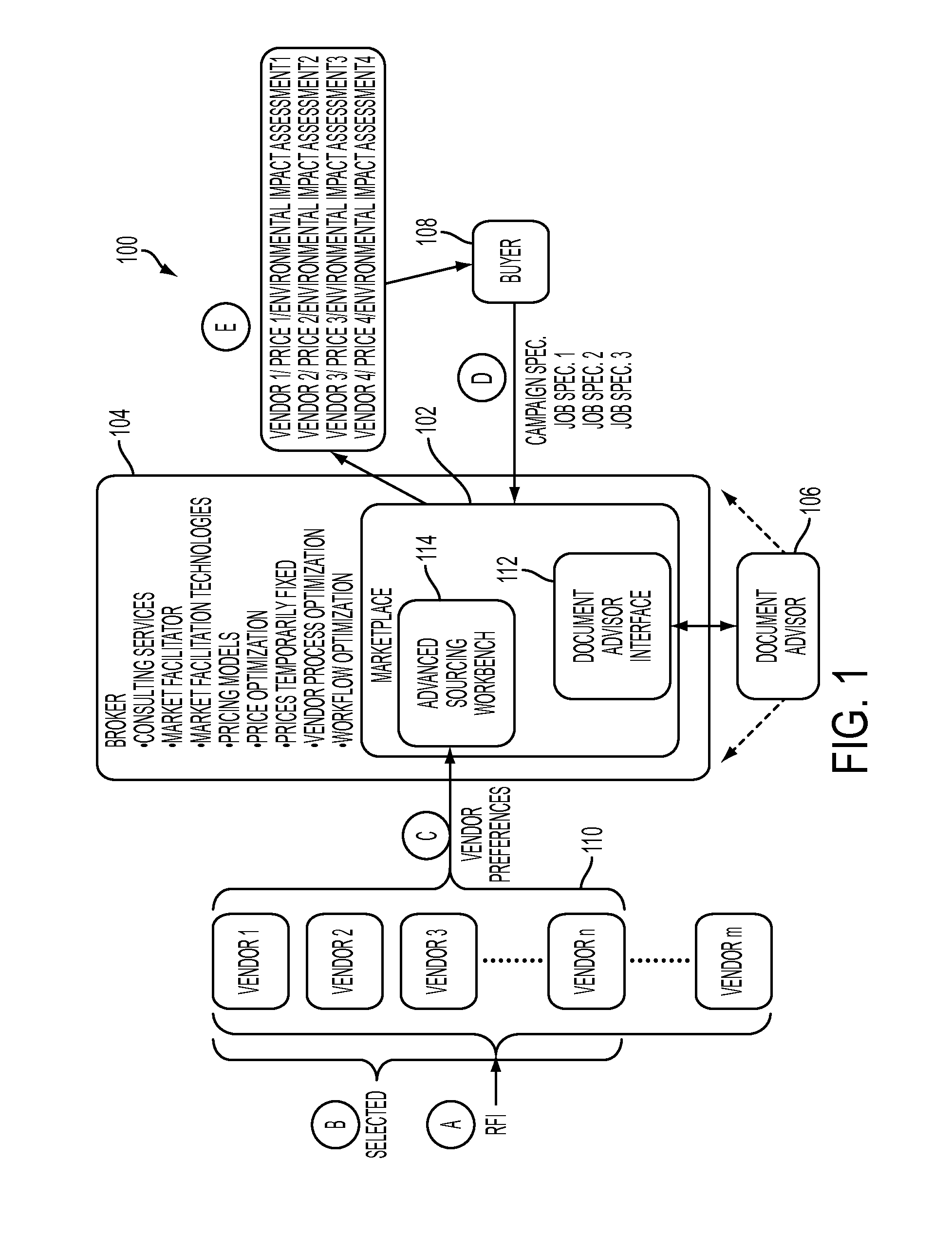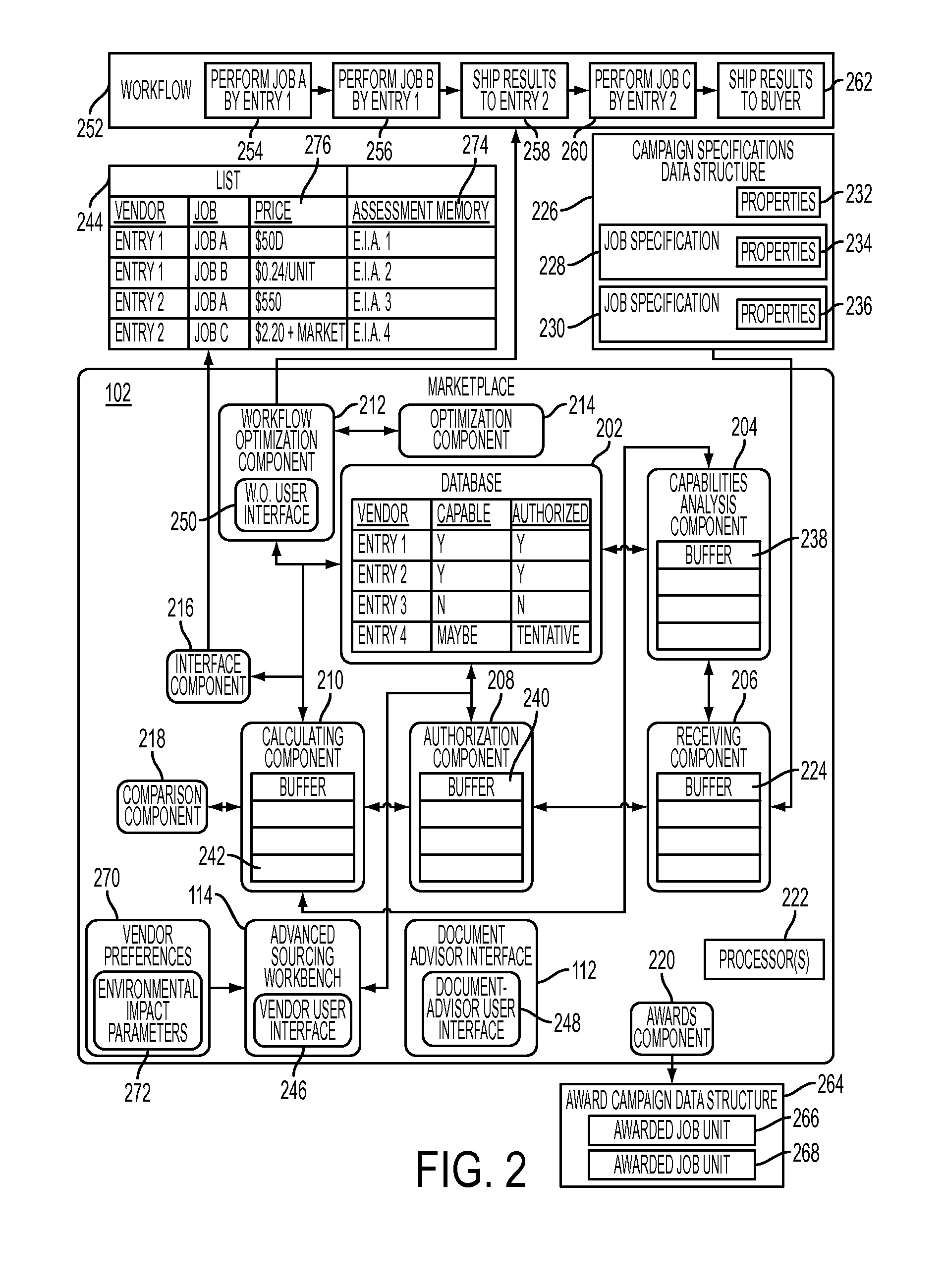System for assessing environmental impact of processing print jobs
a technology for environmental impact and print jobs, applied in the field of print job processing, can solve the problems of negative externalities, negatively affecting the environment and/or the biosphere, and environmental aspects not always fully accounted for in reverse auctions
- Summary
- Abstract
- Description
- Claims
- Application Information
AI Technical Summary
Problems solved by technology
Method used
Image
Examples
example # 1
Example #1
Environmental Impact Assessment
[0079]Consider a one component, one signature job, with 10,000 net goods and an exemplary comparison between two vendors, Vendor A and Vendor B. If Vendor A has a total number of impressions of 11,500 impressions of which 1,000 is setup waste and 500 is run waste (5% of 10,000), the environmental impact assessment would be (or includes) a press waste factor of 15%. If Vendor B has a total number of impressions of 11,150 impressions of which 800 is setup waste and 350 is run waste (3.5% of 10,000), the environmental impact assessment would be (or includes) a press waste factor of 11.5%. Vendor B may have a low number of setup sheets, and a lower run waste percentage, but a high setup charge and run rate. This would mean less waste but the job could have a higher price. Vendor A may have a higher number of setup sheets, and a larger run waste percentage, but a lower setup charge and run rate; in other words, more waste but a lower price.
[0080]M...
example # 2
Example #2
Environmental Impact Assessment Comparison of Two Vendors
[0096]With reference to FIG. 10, consider two vendors as shown: Vendor 1 and Vendor 2. Vendor 1 and Vendor 2 may be two of vendors 110 of FIG. 1. Vendors 1 and 2 have a Base Green Score of 3. Assume that the total green score (the max green score if each column in a corresponding row in an ERPA matrix is 1) is equal to 5. An exemplary ERPA matrix is discussed above.
[0097]Vendor 1 may have a plate making price of 100, a printing price of 500, a plate making green score of 0, a printing green score of 0. The normalized plate making score would be equal to 3−0=3. The normalized printing score is equal to 3−0=3. Therefore, the Green Weighted Price for Vendor 1 is equal to 600+(100*3 / 5)+(500*3 / 5)=960.
[0098]A Vendor 2 may have a plate making price of 200, a printing price of 400, a plate making green score of 5 and a printing green score of 4. The normalized plate making score would be equal 3−5=−2 and the normalized print...
PUM
 Login to View More
Login to View More Abstract
Description
Claims
Application Information
 Login to View More
Login to View More - R&D
- Intellectual Property
- Life Sciences
- Materials
- Tech Scout
- Unparalleled Data Quality
- Higher Quality Content
- 60% Fewer Hallucinations
Browse by: Latest US Patents, China's latest patents, Technical Efficacy Thesaurus, Application Domain, Technology Topic, Popular Technical Reports.
© 2025 PatSnap. All rights reserved.Legal|Privacy policy|Modern Slavery Act Transparency Statement|Sitemap|About US| Contact US: help@patsnap.com



